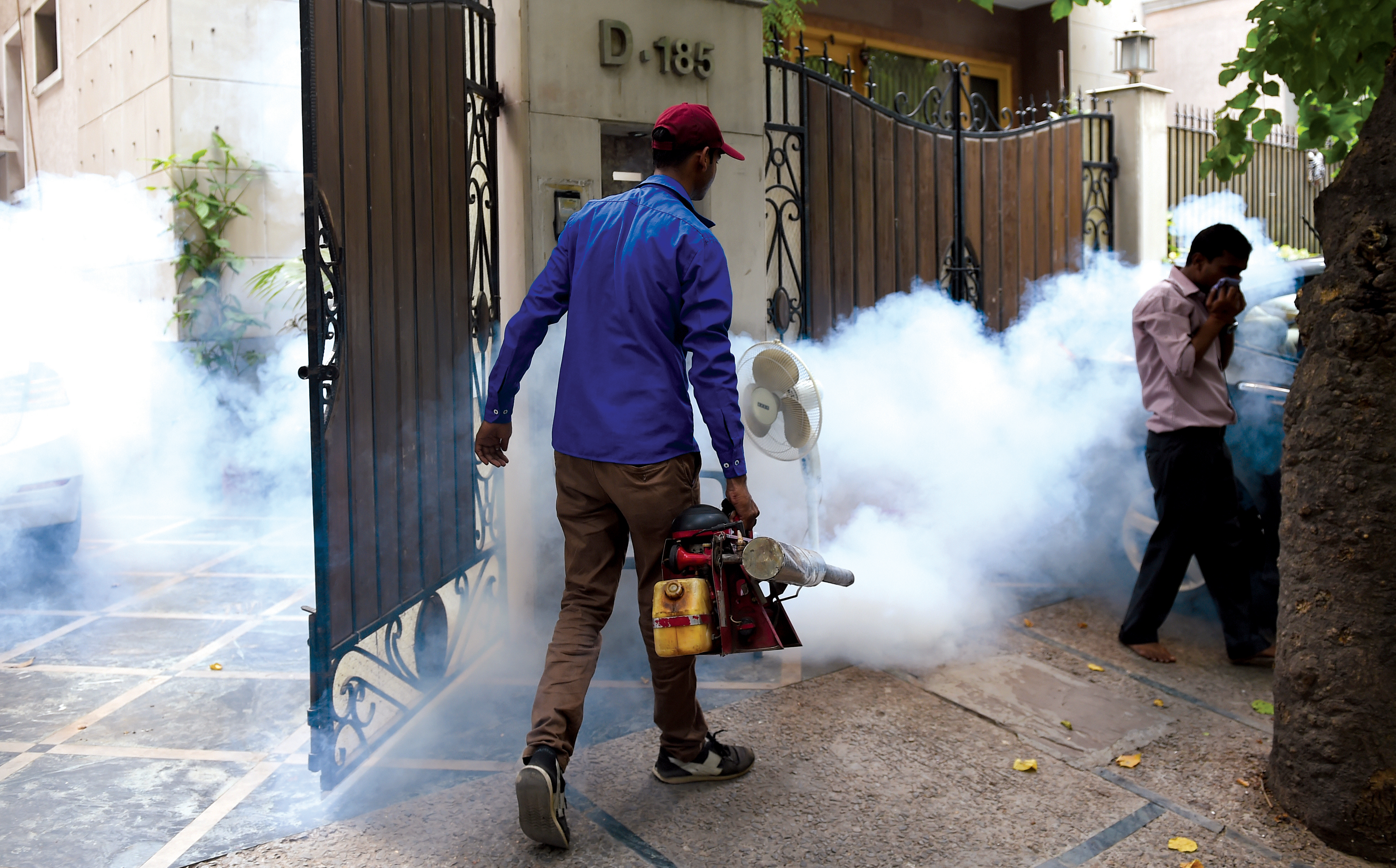Data reveals chief minister Arvind Kejriwal’s claims on dengue true but malaria numbers are rising
There may be a claim that fewer people were affected by dengue this year, but there’s not much celebration happening. Chief Minister Arvind Kejriwal’s government has instead faced taunts and ridicule, as the BJP accuses it of lying and also for taking credit for the city’s Municipal Corporation of Delhi’s (MCD) work.
Looking at the data provided by the MCDs on the numbers of those affected by dengue, and chikungunya this year show a substantial decline, especially in the case of dengue.
In the case of chikungunya, which had seen a huge spike in the year 2016 with 7,760 in total, a progressively lower number was seen each year. To be able to compare the figures better, let’s look at the number of cases which were detected till September 14, 2016 which was 1,057 — much higher than this year’s 60 cases.
For malaria, however, the figures have in fact risen, which is why it makes sense for the CM to only highlight the government’s victory over one vector-borne disease — dengue.
The total number of cases detected till September 14 in 2015 was 66, which then spiked up to 410 cases in the year 2017. This year the number is still at a high 247 cases.
Kejriwal claimed 80% drop in cases of dengue between 2015 to 2018 — one can see these claims in advertisements inside the Delhi Metro, which gives the figures from 2015 as 15,867 cases which then came down to 2,798 in 2018.
Leader of Opposition in the Assembly Vijender Gupta responded by calling the claims “fallacious”.
“The truth is that his (Kejriwal) regime during 2015-18 recorded 27,822 cases. During the corresponding period of 2011-14, the dengue cases were far less at 9,793. Thus, dengue cases recorded a growth of 284%,” he said.
But in fact, dengue numbers have gone down. While 2014 did see a total number of cases at 995 — much lower than the 15,867 cases of 2015 — by the next year it had come down to 4,431 cases. Current numbers stand at 171. For comparison sake, we look at the figure in 2015 till September 14 which had 1,872 cases, much higher than the present 171.
In the entirety of 2015, the total deaths from dengue was at 60 which went down to just four in 2018. At present, no deaths have been reported.
These details do prove Kejriwal’s statement as true. But data provided by the South Delhi Municipal Corporation (SDMC) shows that every year from the month of August till November the largest number of dengue cases are reported. So, while the numbers for this year for August and September look good comparatively, there’s still more than two months to go before the city and its government can celebrate.
Earlier numbers from August 2015 show 778 cases of dengue while in that same month in 2019 Delhi saw 52. For September, the number of cases in 2015 was 677 while this year till 14th of September, almost halfway through the month, the number is at 79.
The war of words between the AAP-led Delhi government and the BJP continues. In a recent media interaction at Municipal Corporation of Delhi’s (MCD) headquarters, Chairman of (New Delhi Municipal Council) NDMC’s Standing Committee Jai Prakash was asked about Kejriwal’s claims on the decrease in dengue cases. His first response was: “They (AAP) have the government so they have a few thousand crores which they spend on media”.
He then went on to say that the MCD’s work was to “get dengue out”, implying that the Kejriwal government was staking claim to something the municipal corporations had achieved.
AAPs latest campaign to fight vector-borne diseases is the ‘10 Hafte, 10 Baje, 10 minute’ slogan which asks residents of the city to check surrounding areas for any water collecting and to drain it out, has also not gone down well with the BJP.
Prakash said he had written a letter to the chief minister asking about the “unauthorised colonies where water is stagnant, what about them?” Here he pointed out that the responsibility lay with the Public Works Department (PWD) which comes under the Delhi government, to clean the area.
“He needs to come down to the ground and see. Telling people to clean their gamlas (potted plants) is not going to help. That’s not the answer.”
Data provided by the SDMC does support this statement as it shows that the vulnerable colonies are “all of the villages and unauthorised colonies” in the area. Interestingly, one of the areas under ‘vulnerable colonies’ listed out by the South Delhi Municipal Corporation (SDMC) includes Delhi’s IIT campus.
Despite it being one of the premium institutions of the city, it remains a danger zone for communicating a mosquito-borne disease.
Other areas include DDA flats in Bidapur, Mohan Garden, Zakir Bagh, Okhla, Lajpat Nagar, Dwarka Sectors 3,5,7,8 and 9 and many more.
In the South DMC, a total of 4,03,794 homes till September 14 were sprayed, which is much higher than the North DMC which had 1,49,015 homes sprayed and East DMC with an even lower number at 43,052 homes.





